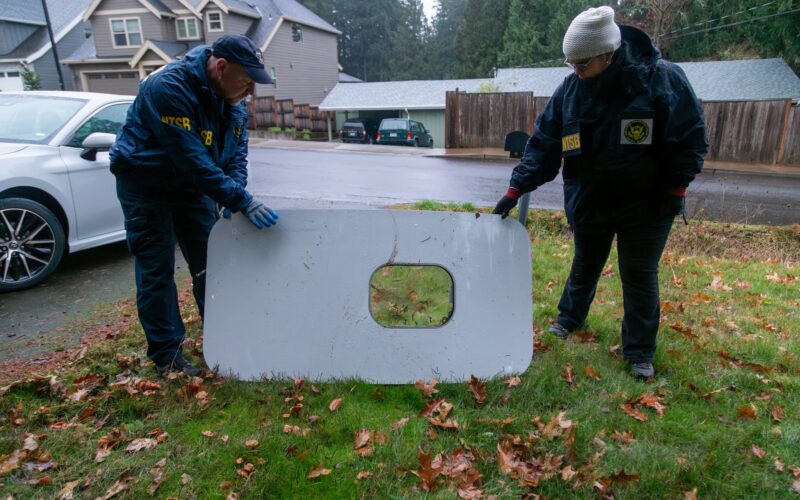The National Transportation Safety Board (NTSB) chair Jennifer Homendy has told lawmakers at the US Senate Commerce Committee, that Boeing had failed to provide key documents relating to the Alaska Airlines 737 MAX 9 door plug blowout.
On March 7, 2024, Homendy informed the committee that documentation which recorded the removal and reinstallation of the door plug during repair work to the 737-9 at the Boeing factory on September 19, 2023, was not provided.
Homendy also said attempts to take the names of 25 Boeing employees who may have worked on the door plug removal and reinstallation had so far been fruitless.
“But for this one, we know for a fact that there is a team that deals with the doors in Renton. The manager has been out on medical leave, so we’ve not been able to interview that individual. We’ve asked for the names of the other 25 people and have not received the names. We’ve asked for the records with respect to what occurred. We asked what shift did it occur on. It’s absurd that two months later we don’t have that,” Homendy told Senators.
Today #NTSB Chair Jennifer Homendy testified before the U.S. Senate Committee on Commerce, Science, & Transportation on NTSB's critical role in transportation safety, investigation updates, and needed resources. Read her full opening statement here: https://t.co/lwlZXMzXkq pic.twitter.com/S1CWdaxpGI
— NTSB (@NTSB) March 6, 2024
Republican Senator Ted Cruz asked Homendy: “Are you telling us that even two months later you still do not know who actually opened the door plug?”
“That’s correct, and it’s not for lack of trying,” she said.
Referring to key documents being withheld, Homendy told the committee that it was “absurd that two months later we don’t have that”.
The NTSB chair added: “Without that information, that raises concerns about quality assurance, quality management, safety management systems” at Boeing.
According to The Guardian, Homendy also said security camera footage that may have proven who removed the door plug was erased and recorded over 30 days later.
Following the hearing Boeing released a statement indicating that key documents the NTSB asked for may not exist.
“Early in the investigation, we provided the NTSB with names of Boeing employees, including door specialists, who we believed would have relevant information. We have now provided the full list of individuals on the 737 door team, in response to a recent request. With respect to documentation, if the door plug removal was undocumented there would be no documentation to share. We will continue to cooperate fully and transparently with the NTSB’s investigation,” Boeing said in its statement.
The planemaker added: “We have deep respect for the NTSB and the critical role they play in aviation safety. Since the first moments following the Alaska Airlines Flight 1282 accident, we have worked proactively and transparently to fully support the NTSB’s investigation. Our team works tirelessly with the NTSB team to respond comprehensively to all NTSB information requests and bring information to them that would be relevant to their investigation.”
The preliminary NTSB report with photographic proof of missing bolts….has so much interest its crashed the NTSB website. pic.twitter.com/dAgUhNeoNy
— Paul Breed (@unrocket) February 6, 2024
In February 2024, the NTSB published a preliminary report into the Alaska Airline incident that confirmed that four key bolts designed to hold the door plug in place were missing.
The four bolts were removed, and the door plug taken out at the Boeing factory on September 19, 2023, to allow repair work to be carried out by Spirit AeroSystems staff on five rivets inside the 737-9.
A photo of the door plug reinstalled by Boeing employees later that day showed that there were no bolts present in three of the visible locations, while the fourth was covered with insulation.
On January 5, 2024, Alaska Airlines Flight 1282 took off from Portland International Airport (PDX), but when the 737-9 reached around 16,000 feet the door plug on the left rear side of the plane separated from the aircraft causing a sudden decompression.

